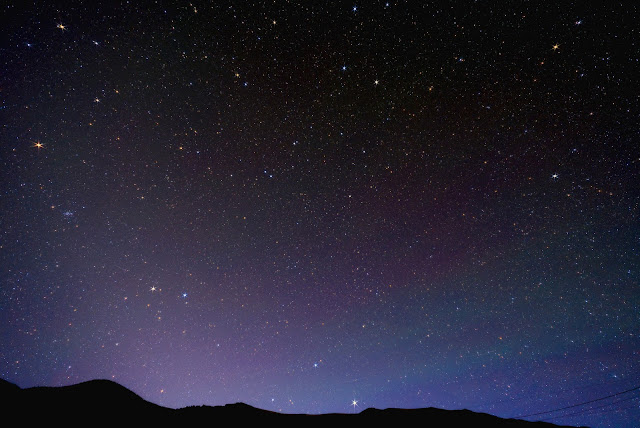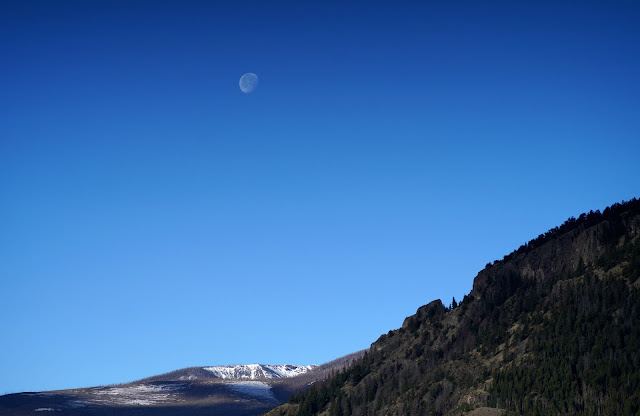At this time of year astronomical twilight ends (sun 18° below horizon) just after 10pm MDT. Pictures taken before that will still show some blue in the sky, even though it appears dark to the eye.
This image was taken at 9:33 pm with a fish-eye lens:
 |
| E-M1iii + Rokinon 7.5mm f/3.5 fish-eye. ISO 1600, 60 s. |
The Big Dipper stands high near top center in this view. This image was a prelude to a 1-hour star-trail exposure that was half in twilight and half in dark sky: |
| E-M1iii live composite, 1 hour. |
It is impossible anymore to take long-exposure views of the sky without being photobombed by planes and satellites. Here is a crop from the above image that shows the passage of a satellite swarm (bottom center):
When twilight ends the sky has been remarkably dark. The last two nights at 11pm MDT the sky brightness has measured sqml=21.67 mpsas. The summer crowd has not yet showed up to leave porch lights blazing all night, so this is a great time to enjoy stargazing. It won't last long. I can already hear the buzz of ATVs doing laps around the neighborhood. |
| Corona Borealis. Sony A7 + Samyang AF 85mm f/1.4 + Softon filter. |
The constellation Corona Borealis is the location of a recurrent nova that is expected to erupt "very soon now". Also known as the "Blaze Star" the location of this variable star is shown in the chart below. When it erupts it will likely be as bright as Alphecca, the brightest star in this constellation. |
| credit: SkySafariAstronomy.com |
The constellation Lyra is the location of Vega, the fifth brightest star in the night sky, and an iconic double star, Epsilon Lyrae, also known as the "double double".
 |
| Lyra. Sony A7iii + Samyang AF 85mm f/1.4 + Softon filter. |
 |
| credit: SkySafariAstronomy.com |
The two main components of Epsilon Lyrae, known as ε1 and ε2, are separated by 208 arcsec and are easy to see in small scopes.
 |
| Epsilon Lyrae. Astro-Tech 102mm ED telescope, Olympus E-M5iii. |
Each of the two main components is also a double star (hence the name "Double Double") and can be resolved with larger scopes. The separations are only 2.6 arcsec and 2.2 arcsec, so high magnification is required. I tried to capture them photographically with a Celestron C8 telescope and was only moderately successful. Splitting these components requires a steady atmosphere, and the star was only about 30 deg above the horizon.
 |
| Epsilon Lyrae. Celestron C8. ISO 400, 1/10 s. stack of two images. |
I tried viewing at 200x and had a hard time separating the stars visually. It is surprising that the images turned out as well as they did. This will require another attempt when the stars are higher in the sky.
Vega is the fifth brightest star and is an A-type star with strong hydrogen absorption lines in its spectrum:
Vega was the first star to be photographed, on silver-plated copper, in 1850. It was also the first star to have its spectrum photographed, in 1872. Sky & Telescope magazine has a nice article by Bob King here.



















































